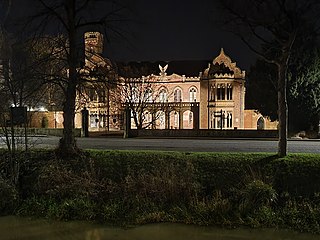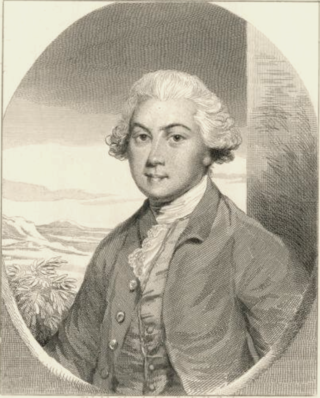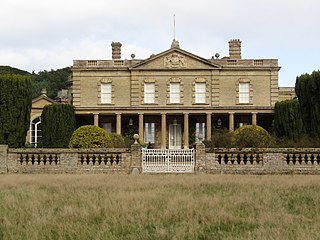Honingham Hall was a large country house at Honingham in Norfolk.

Honingham Hall was a large country house at Honingham in Norfolk.

The house was commissioned by Sir Thomas Richardson, Chief Justice of the King’s Bench in 1605. [1] After passing down the Richardson family, it was bought by Richard Baylie, President of St John's College, Oxford, in about 1650 [2] and was then acquired by William Townsend, Member of Parliament for Great Yarmouth in about 1735, before passing down the Townsend family. [3] In 1887, it was inherited by Ailwyn Fellowes, 1st Baron Ailwyn and in 1924 by Ronald Fellowes, 2nd Baron Ailwyn who sold it in 1935. [1] It was then bought by Sir Eric Teichman, a diplomat, who allowed it to become a Barnardo's home in 1940 during World War II. [4] Teichman was murdered in the grounds of the hall by a poacher one night in December 1944. The killer was Private George E. Smith of Pittsburgh who, with Private Leonard S. Wijpacha of Detroit, was trespassing in the grounds of the estate. Both intruders were American soldiers based at a nearby US airfield and each was armed with an M1 carbine. [5] The house closed as a Barnardo's home December 1966 and was subsequently demolished. [4]

Ramsey Abbey was a Benedictine abbey in Ramsey, Huntingdonshire, England. It was founded about AD 969 and dissolved in 1539.

Ayscoughfee Hall is a grade I listed building and modest associated parkland in central Spalding, Lincolnshire, England, and is a landmark on the fen tour.

Watts Naval School was originally the Norfolk County School, a boarding school set up to serve the educational needs of the 'sons of farmers and artisans'. The school was later operated by Dr Barnardo's until closure in 1953.

Ailwyn Edward Fellowes, 1st Baron Ailwyn, was a British businessman, farmer and Conservative politician. He was a member of Arthur Balfour's cabinet as President of the Board of Agriculture between March and December 1905.

Sir Eric Teichman was a British diplomat, orientalist, travel writer and photographer.
Lt.-Col. Ronald Townshend Fellowes, 2nd Baron Ailwyn was a British peer, the son of Ailwyn Edward Fellowes, 1st Baron Ailwyn. He succeeded to the Barony on 23 September 1924. He lived at Honingham Hall in Norfolk until he sold it in 1935.
Richard Baylie was twice President of St John's College, Oxford, twice Vice-Chancellor of Oxford University, Archdeacon of Nottingham and Dean of the Salisbury Cathedral.

Lynford Hall is a neo-Jacobean country house at Mundford, near Thetford in the English county of Norfolk. It is now a hotel.

Edward Fellowes, 1st Baron de Ramsey DL was a British Conservative Member of Parliament.
William Henry Fellowes, of Ramsey Abbey in Huntingdonshire and Haverland Hall in Norfolk, was a British Member of Parliament.

Sir Thomas Richardson of Honingham in Norfolk, was an English judge and politician who sat in the House of Commons from 1621 to 1622. He was Speaker of the House of Commons for this parliament. He was later Chief Justice of the Common Pleas and Chief Justice of the King's Bench.

Horstead Hall was a country house in Norfolk that was demolished in the 1950s.

The Honourable William Townshend was a British Member of Parliament.

Charles Townshend, 1st Baron Bayning PC was a British politician.

Charles Frederick Powlett, 2nd Baron Bayning, known as the Honourable Charles Townshend from 1797 to 1810, was a British peer and Tory Member of Parliament.
Henry William-Powlett, 3rd Baron Bayning, styled The Honourable until 1823, was a British peer and clergyman.

Honingham is a village and civil parish in the English county of Norfolk, located 8 miles (13 km) to the west of Norwich along the A47 trunk road. It covers an area of 10.55 km2 (4.07 sq mi) and had a population of 342 in 145 households at the 2001 census, increasing to a population of 358 in 160 households at the 2011 Census. For the purposes of local government, it falls within the district of Broadland. Honingham Hall was demolished in 1966.
Thomas Richardson, 2nd Lord Cramond of Honingham Hall, Norfolk was an English politician who sat in the House of Commons from 1660 to 1674.

Gunton Hall, Gunton Park, is a large country house near Suffield in Norfolk.

Gillingham Hall is a Jacobean manor house in the village of Gillingham, Norfolk, England. It is a Grade II* Listed Building.